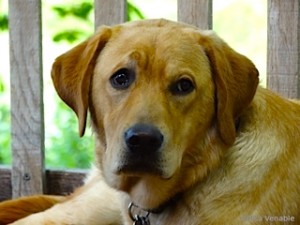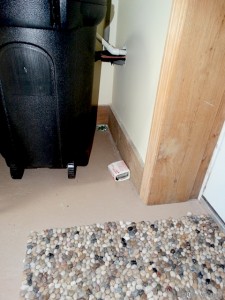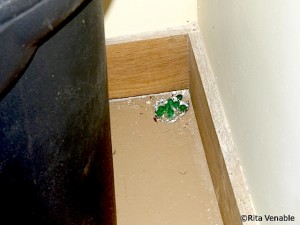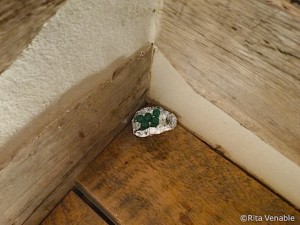
Our family had a great time in a rental cabin on the lake until the final night. I went down the steps into the basement outside access area and Jack, our son Jeff’s eight-month-old English Labrador retriever, followed me. Fortunately, Jeff trailed Jack and saw him chewing on something that he knew wasn’t his dog food. Oh, no, what has he gotten into now?

We looked around the room and spied some apple green, gumdrop-like pellets in a corner by the door. The pellets were lying uncovered on some aluminum foil. We realized it was rat poison and within minutes Jeff was on the phone to a 24-hour vet care facility asking about what to do when a puppy ingests this substance. Jeff rushed Jack to Nashville where the vet induced vomiting and found several pieces of ingested poison pellets. Jack had eaten more than just one of the pellets making it a long night for both Jack and Jeff.

The next day, it was time-consuming to track down the name of the poison from the rental agency and eventually the cabin owners, but the vet said it was important to know. The poison turned out to be Ramik Green Bait Packs which contain .005% Diphacinone, an anticoagulant. Since Murphy, our son-in-law’s dog, was also in the rental cabin, we had to assume he had eaten some of the poison as well since we found it in 2 of the 3 bedroom closets, a bathroom closet, and a water heater closet. Both Jack and Murphy had to take vitamin K pills twice a day for a month to counteract the blood thinning properties of the Diphacinone which blocks the body’s ability to produce vitamin K which clots the blood. It causes internal bleeding and eventual death in rodents.*
The scary thing is that we had a seven-month-old baby with us that could easily have gotten into the poison if she were crawling or walking. Ramik makes the poison in flavors—chocolate, apple, fish, etc. Some of it looks and smells like candy.

The purpose of this story is not to debate the pros and cons of this particular rodent control. It is true that rodents may carry diseases that are hazardous to humans, but rodenticide ingestion was in the “Top Pet Toxin of 2013” list by the American Society for Prevention of Cruelty to Animals (ASPCA). However, not only is rat poisoning toxic to pets but to wildlife as well. Animals that scavenge on dead rats and mice may circulate poison in the food chain. There are other ways to prevent rodents from frequenting certain locations.
Both the rental agency and the cabin owners were apologetic and paid for all vet bills, which will total about $1,000. Also, they waived the rental fees on the cabin. This cabin was listed as “dog friendly” online.
From now on, we will check all the nooks and crannies in homes before we take our pets and grandchildren anywhere. We will not assume that anything that reads “Pet Friendly” or “Child Friendly” really is. If we visit a house near the water, we will ask about rodent poisons when children or pets are coming with us.
Our story has a happy ending since there are no signs of lasting damage to either dog. Just please take this advice and watch out for anything that looks like candy in a corner – it might be a poison pill.
* Coumadin, a blood thinner used for people, is made from warfarin, a rat poison.